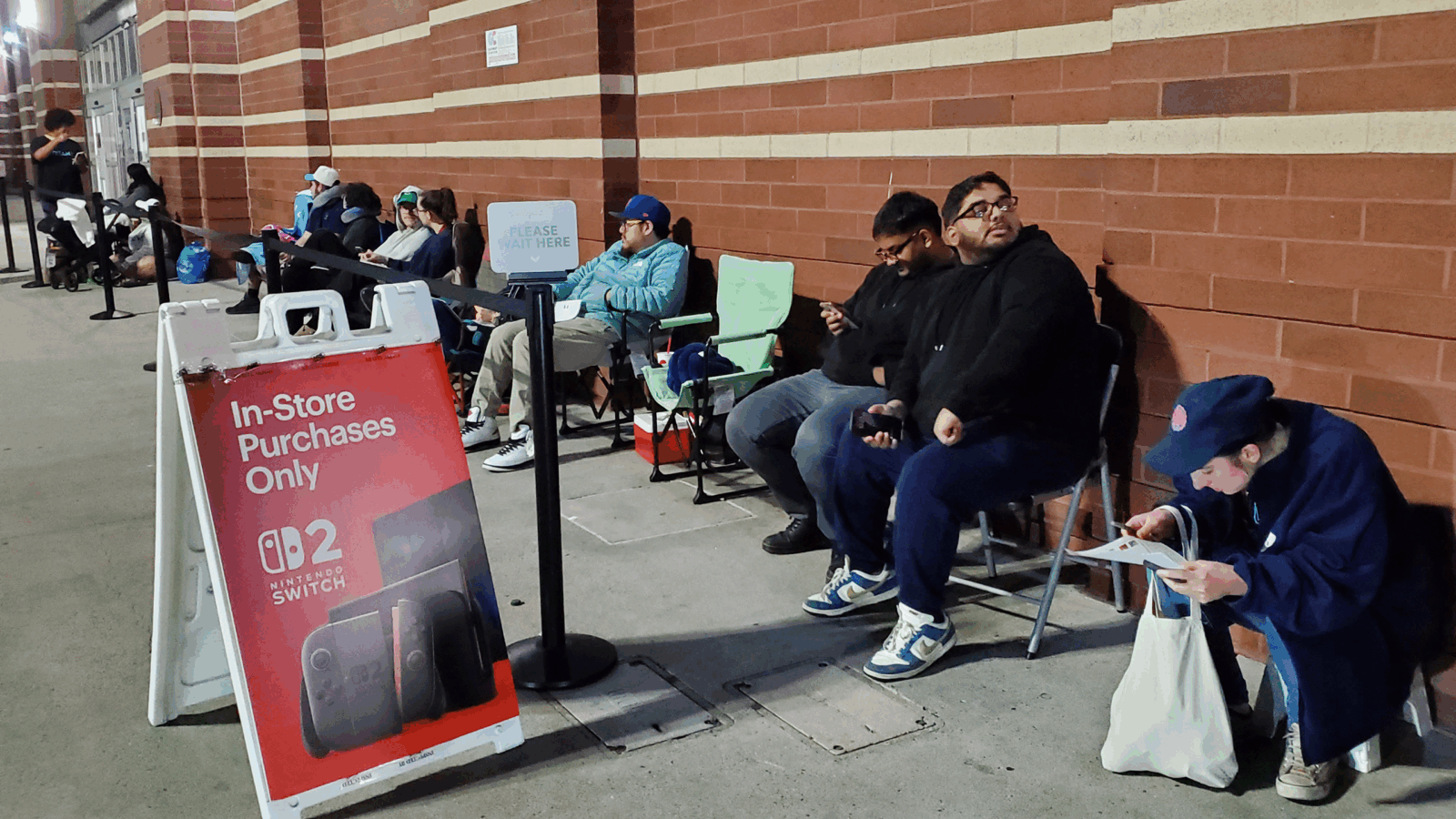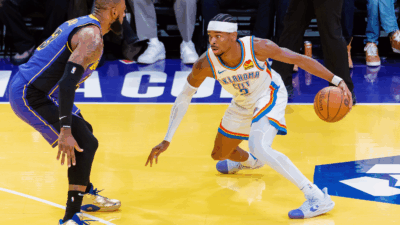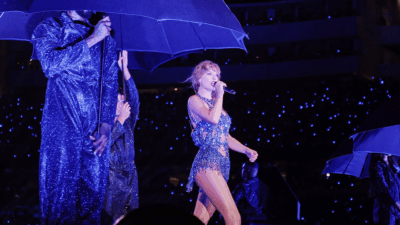With Great Sales, Comes Great Instability: Can Superheroes Survive Oversaturation?

Sign up for smart news, insights, and analysis on the biggest financial stories of the day.
Long dismissed as lowbrow, comic books are increasingly high finance. The intellectual properties contained within their pages are some of the most profitable pieces of the entertainment and merchandising businesses.
Four of the top 10 highest-grossing films of all time are based on Marvel Comics characters. When the first New York Comic Con took place in 2006, it attracted 33,000 fans, but by 2019 attendance had shot up nearly 800% to 260,000.
Today, heroes and villains influence everything in our culture from movies to TV, to our personal aspirations and even coffee makers, oddly enough.
It wasn’t so long ago that the companies that brought us household names like The Incredible Hulk, Wonder Woman, and The Walking Dead were experiencing more ups and downs than the Scarlet Witch. Some of them even had to declare the “B” word.
The comics industry not only survived but thrived and is valued at $15 billion today. But with many feeling superheroes have overstayed their welcome, will comics be able to sustain their success?
So, true believers, tie your capes, don your cowls, and get ready to take flight into the world of comics.
Going Once, Going Twice
For more than half a century, comics were like newspapers for kids. During the Golden Age (1938 to 1956), children would buy them for about 10 cents a piece, flip through the pages, and toss them out before picking up the next issue. Only a select few would actually hold on to these colorful little booklets, and years later, their original prints of Action Comics #1 and Amazing Fantasy #15 (the first appearances of Superman and Spider-Man, respectively) were worth quite a bit of money.
So let’s fast forward to an extreme and radical era called…The 1990s.
The Soviet Union was dissolving, McDonald’s coffee was way too hot, and the comic book industry was having a rebirth:
- While the 1980s boosted general market appeal with critically-acclaimed books like Frank Miller’s The Dark Knight Returns and Alan Moore’s Watchmen, ‘90s comics are not remembered for their quality writing or artwork.
- Keeping with the 90’s neon/grunge emotional aesthetic, many superheroes went through odd redesigns, making them look like sci-fi hair metal singers in power armor. Just look at what they did to Thor. Everyone wielded gigantic guns, even Superman. Questionable storylines included the time Green Lantern opened his refrigerator to find his girlfriend’s corpse stuffed inside.
And yet, buyers couldn’t keep their hands off comics. Why?
In 1991, Sotheby’s auctioned off comic books for the first time in its history, and baseball memorabilia collector Harold Anderson paid $55,000 for a copy of Detective Comics #27, the 1939 issue with the first appearance of Batman (back when he drove a red Packard instead of the tank on wheels we know today.) By the end of the auction, Anderson had spent roughly $230,000 on Golden Age comics and newspaper funnies.
He told The New York Times, “I think comic books are on the ground floor of an explosive market.”
The Boom…
After that, the comics industry hit an extraordinary peak, driven by buyers looking to get rich:
- Marvel, DC, and new independent publishers like Image and Valiant printed issues by the millions, offered countless gimmick items such as variant covers and trading cards to perpetuate an even further sense of collectibility, and created dozens of new series to allure buyers with that ever-tantalizing “Issue #1” in the corner.
- Publishers also leaned on massive shakeup stories like The Death of Superman. Here’s a summary: He was punched really hard by an alien, died, and returned less than a year later with a black suit and a mullet. Today, many view it as a lame publicity stunt, but at the time, it sold 6 million copies worldwide. One comic book shop owner in Allentown, Pennsylvania, told The Morning Call newspaper he bought 3,000 copies – roughly 100 times his normal order – of that one issue.
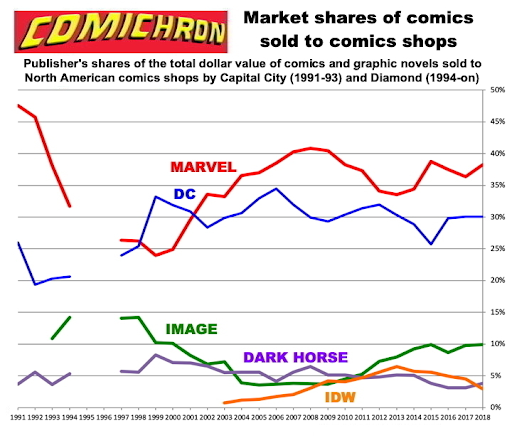
By the start of 1993, the comics industry saw a record $800 million in sales, up from $500 million the year prior. But as quickly as comics soared, they fell harder than Gwen Stacy when the Green Goblin hurled her off the Brooklyn Bridge. Oh, SNAP.
…And the Bust
Newbie buyers had misinterpreted Anderson’s enthusiasm. He was talking about rare comics – issues that were 50 years old and were one of only a few dozen left in the world.
The ‘90s speculators thought they could flip their brand-new comics in a matter of months for major payouts. When they returned to the shop looking to sell, they quickly realized their first edition copies of X-Force and Venom, which everybody now owned, were worth only a few dollars, definitely not enough to retire to a beachy locale. Even today, a copy of an objectively good ‘90s comic like Batman: The Long Halloween #1, might fetch you maybe a few hundred dollars.
Plus, this era saw an influx of comic book shops. It seems out of place today, but normally, readers would pick up issues at the newsstand, the pharmacy, or the grocery store – places that didn’t rely on superheroes to meet their bottom line. But by 1992, 70% of sales were coming from thousands of comic book shops, many of which were managed by young, inexperienced entrepreneurs who —like our friend from Allentown– bought way more inventory than they could ever push. When the customers stopped coming, many of those businesses folded.
Boom! Bam! Zap!
Captain America might be able to “do this all day,” but the blows just kept coming for the comics industry:
- Independent publishers like Defiant Comics and Awesome Comics were helmed by rightfully jaded artists who no longer wanted to work for the Big Two. But while creative on the page, they weren’t exactly entrepreneurial superheroes, and many ended operations before 2000.
- DC was lucky enough to have been purchased by Warner Bros. in the late-’60s. So with plenty of financial backing from a massive media conglomerate, it was able to weather the storm.
- In 1996, Marvel, the past and future king of the industry, saw its share price drop more than 90% compared to just three years prior, laid off nearly 300 employees, and filed for Chapter 11 bankruptcy.
One year later, the company merged with Toy Biz, which was owned by Marvel board member Isaac Perlmutter. Marvel was able to stay afloat, but it’d be another few years before they were back on top.
The Avengers Initiative
Shortly after the bankruptcy, Marvel began selling off movie rights to its characters. Sony got Spider-Man, Fox got the X-Men and the Fantastic Four, and Lions Gate got the Punisher.
Those deals only helped so much. Marvel needed to roll the dice and bet on itself.
- In 2005, the company struck a $525 million deal with Merrill Lynch to fund a series of films made in-house. And as collateral: film rights to characters like Iron Man, Thor, and Captain America.
- Marvel then went through Paramount as a distributor, and thus the MCU and its first phase were born. Even before the film deal ended with Paramount and the first Avengers hit theaters, Disney was knocking on Marvel’s door. In 2009, the House of Mouse bought the House of Stan Lee for $4 billion.
And, well, you know the rest. A bunch of movies and TV shows – despite most being just OK critically – have now brought Marvel’s value up to $53 billion.
A Better Tomorrow?
But is superhero fatigue setting in?
Sure, the movies were easy enough to follow for a time, and that got consumers interested in buying comics again. But now, Marvel has more than 30 films under its belt and a bevy of TV shows that also factor into ongoing storylines. A study by Fandom found that 84% of Marvel fans agree there’s too much content to keep up with. And anybody who actually watched the 40 seasons of TV within CW’s Arrowverse… you should be given a medal.
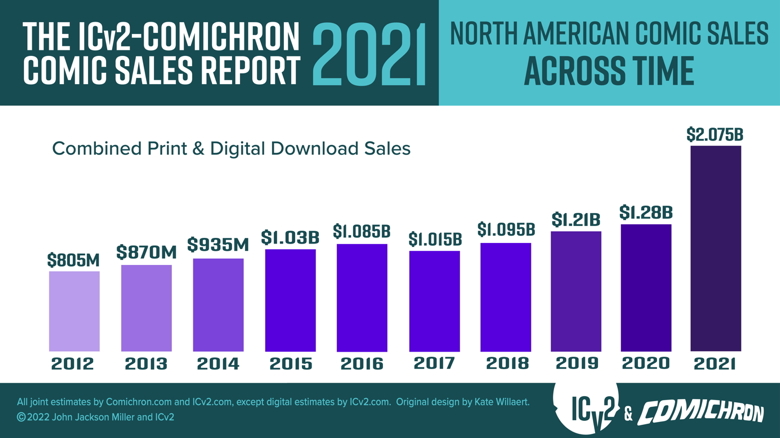
Regardless of their oversaturation, superheroes are still in high demand. Along with its film and television counterparts, the comic book industry itself is booming. By 2021, North American comic book sales reached more than $2 billion, up from an already record-breaking $1.28 billion the year prior. And while actual paper books are still the money makers, digital comics have popped in popularity in recent years too, reaching $170 million in sales in 2021.
Despite America’s nostalgia for the decade – for example, The Conners, fanny packs, Brendan Fraser – a comics crash appears to be one phenomenon safely stuck in the ‘90s.




